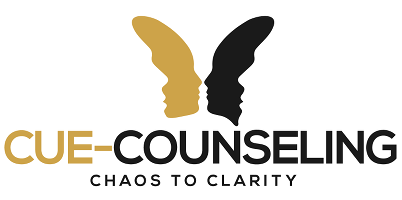Attacking Anxiety: How to Overcome Fear and Build Emotional Resilience
Reframe Anxiety as a Challenge, Not a Curse
Instead of viewing anxiety as a burden to manage, what if you saw it as an opponent to overcome? Or even better—as author Joseph Campbell might put it—a call to adventure.
Many people struggling with anxiety believe there’s something in life they simply can’t face. They imagine that if they ever encountered their deepest fear, it would break them. To cope, they avoid the fear, engage in rituals, or seek constant reassurance.
But here’s the truth: avoidance strengthens anxiety. Facing it—step by step—is how you weaken it and regain control over your life.
What Is Anxiety, Really?
At its core, anxiety is a survival mechanism. But when that response becomes overactive or misplaced, it begins to control your behavior.
You may:
-
Avoid social situations
-
Obsess over worst-case scenarios
-
Rely on rituals to feel “safe”
-
Experience physical symptoms like racing heart or shallow breathing
This is what creates the cycle of anxiety—a loop that keeps you trapped.
Anxiety Treatment: Why Exposure Therapy Works
One of the most effective ways to overcome anxiety is through exposure therapy, which involves facing your fears in a structured, supportive way.
The goal is not to eliminate fear—it’s to build confidence in your ability to handle it.
How Exposure Therapy Works:
-
You and your therapist create a fear hierarchy (from least to most anxiety-provoking).
-
You begin with manageable steps and gradually face scarier situations.
-
You’re given tools to cope in the moment, such as:
-
Mindfulness meditation (like Vipassana)
-
Anxiety rating scales (e.g., “Rate your anxiety from 1 to 10”)
-
Grounding techniques (e.g., counting colored objects in a room)
-
These exercises help you see that anxiety peaks and fades, often without any dangerous outcome.
Step 1: Training for the Fight Against Anxiety
You are not being thrown into the deep end. Therapy teaches you how to prepare. Just like a fighter, you train before entering the ring.
Here’s what that preparation might include:
-
Practicing calm breathing techniques
-
Understanding your anxiety triggers
-
Setting realistic goals
-
Accepting discomfort as part of growth
Step 2: Taking Action Against Anxiety
Once prepared, you begin facing your fears in real life. This doesn’t mean overwhelming yourself—it means starting small and being consistent.
Examples:
-
Fear of public speaking? Start by reading aloud to yourself. Work up to joining a small group or class.
-
OCD or perfectionism? Delay your compulsions in short, manageable intervals.
-
Phobia of spiders? Start with photos, then videos, and eventually controlled real-life exposure.
-
Social anxiety? Commit to introducing yourself to one new person each day.
Each fear you face is a small victory, reinforcing the truth: You can survive what scares you.
Step 3: Building Self-Trust and Emotional Resilience
As you face fears regularly, something powerful happens—you start to trust yourself.
-
You realize you can think clearly under pressure.
-
You prove to yourself that fear doesn’t define you.
-
You become confident, capable, and emotionally resilient.
If anxiety is built on doubt, then trust is the cure.
Fighters know they’ll get knocked down sometimes—but they keep getting back up. You can too.
Progress, Not Perfection
You don’t need to become “fearless.” That’s not the goal.
The goal is to feel the fear and do it anyway—with compassion, strategy, and purpose.
Remember:
-
It’s okay to take breaks
-
It’s okay to fail forward
-
It’s okay to go at your own pace
Each step forward is progress. And progress is power.
Final Thoughts: Mastering Anxiety with Intention
You don’t have to let anxiety limit your life. You can:
-
Train with therapeutic tools
-
Act through intentional exposure
-
Reflect to celebrate growth and build resilience
Facing your fears isn’t easy, but it’s worth it. Not just to reduce anxiety, but to become who you were meant to be—strong, confident, and free.
So go ahead: Beat your chest, step into the ring, and challenge your anxiety. You’re not running anymore—you’re rising.
